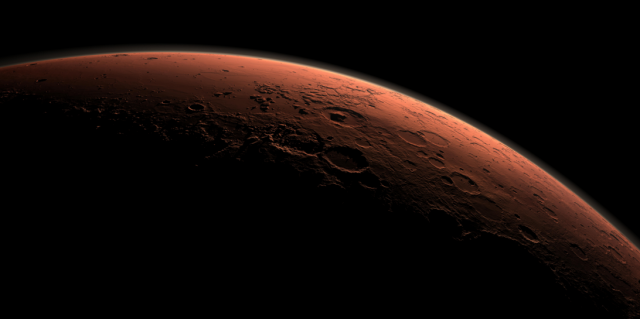NASA has been covering up the truth about life on Mars
07/28/2018 / By Isabelle Z.

NASA announced recently that it discovered organic molecules on Mars. In a press release, the agency said that the Curiosity rover discovered new evidence in rocks suggesting the planet may have supported ancient life, along with new evidence in the planet’s atmosphere related to the search to find current life on the planet.
The findings include organic molecules in sedimentary rocks that are billions of years old found near the planet’s surface, and they also discovered seasonal variations in atmospheric methane levels.
Although it’s being touted as a “new” discovery, Mike Adams says NASA had proof there was microbial life on Mars as far back as 1976, when the Viking mission found it with mass spec equipment.
On that occasion, Gilbert Levin, who was tasked with heading the mission’s life detection experiment, said that space probes found signs of life on Mars but it was covered up. The scientist has been critical of NASA ever since. He theorized that microorganisms may have made their way to Mars in a frozen and dried state after being injected into space from meteor strikes. Carl Sagan even reportedly congratulated this scientist on what many considered one of the greatest discoveries in science history, but it was quickly covered up.
In a video posted to the free speech platform REAL.video, Mike Adams talks about how NASA covered that up for political reasons, which begs the question of what else they might be covering up. He also talks about why carbon in the atmosphere is essential to life rather than the pollutant that the global warming camp would have you believe.
Adams believes that NASA preferred to slowly leak out the possibility of life on Mars discovered in the 1970s rather than catching the public off guard with the finding because they feared global chaos across various religions.
Organic molecules contain carbon, like the molecules in our body. Organic molecules are generally created by living organisms, such as plants. Adams points out that what they found were bigger molecules, which does support the idea that life is or was on Mars. All organic molecules can break down over time due to exposure to heat, radiation, and other conditions, which means what they found could, in theory, have been created fairly recently.
Getting closer to the truth
Could life even be there right now creating these molecules?
It’s not impossible when you consider the presence of water under the ice caps on Mars. Scientists reported in a study released this week in the journal Science that they found a lake under the surface of an ice cap situated at Mars’ south pole. The lake, which spans 12.5 miles, was found using the MARSIS radar and is believed to be a legitimate body of water rather than mere runoff from ice.
Scientists say that it could be our best clue at the possibility of life on Mars. Unlike the planet’s surface, which is considered inhospitable to life, the lake could well prove to be a good environment for microbial life to thrive. A similar lake found below the ice in East Antarctica on Earth, Lake Vostok, is home to thousands of species of fungi and bacteria.
The lead scientist of NASA’s Mars Exploration Program, Michael Meyer, said: “Are there signs of life on Mars? We don’t know, but these results tell us we are on the right track.”
Sources for this article include:
Tagged Under: alien life, coverup, deception, discoveries, Gilbert Levin, Life on Mars, Mars, MARSIS, NASA, Space, space exploration, water on Mars



















